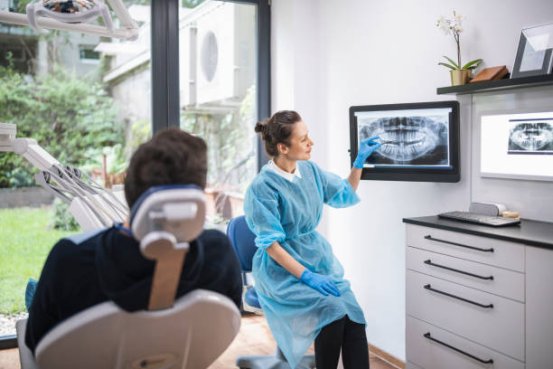The field of dental implantology is undergoing rapid innovation, and screwless implant systems are emerging as a promising alternative to traditional screw-retained designs. Praised for their improved comfort, aesthetics, and simplified maintenance, these implants are redefining expectations in restorative dentistry. But how exactly do they work, and could they be the right choice for you?

Missing teeth can have a major effect on daily life — impacting your ability to eat, speak clearly, and smile with confidence. While conventional dental implants have long been the preferred solution, new technologies like screwless implants are reshaping modern dentistry. Designed to overcome certain drawbacks of screw-retained systems, screwless implants are gaining momentum among patients and professionals alike. The question is whether they truly represent the future of implant-based tooth replacement.
What Are Screwless Dental Implants and How Do They Function?
Screwless dental implants, often called press-fit or friction-fit implants, differ mainly in how the crown attaches to the implant post. Traditional implants use a small screw to connect the abutment and crown to the titanium fixture in the jawbone. In contrast, screwless systems eliminate this screw mechanism, using frictional retention or dental cement instead.
The implant still integrates with the bone through osseointegration — the biological bonding process essential for implant stability. The key change lies above the gum line: the restoration attaches either through a tapered, mechanical lock or with cement, creating a smooth, natural-looking connection. This approach aims to simplify the restoration process while minimizing the risk of mechanical issues over time.
How Does the Procedure Differ from Traditional Implant Surgery?
The surgical placement of screwless implants follows nearly the same steps as traditional procedures. The oral surgeon places a titanium post into the jawbone, allowing several months for osseointegration. The main difference occurs later — during the prosthetic phase.
Whereas traditional implants require a screw to secure the crown, screwless systems utilize a press-fit or cemented attachment. This can reduce chair time and make restoration simpler. However, the surgical phase itself, including anesthesia, healing time, and follow-up care, remains comparable to conventional methods.
Advantages of Screwless Dental Implants
Screwless implants offer several potential benefits that enhance both functionality and appearance. One of the most significant is the elimination of screw-related complications such as loosening, fracture, or bacterial leakage through the access hole. Without a visible screw channel, the restoration also achieves a cleaner, more natural appearance.
The streamlined design can make maintenance and repair more straightforward. In many cases, crowns can be removed or replaced without disturbing the implant itself. This flexibility, combined with fewer mechanical parts, may improve long-term reliability. Patients and dentists alike appreciate the simplified structure, which can reduce the likelihood of technical problems.
Ideal Candidates for Screwless Implants
The criteria for screwless implant candidacy are similar to those for traditional implants: adequate bone density, healthy gums, and good overall health. Non-smokers tend to experience better outcomes, as smoking can hinder bone integration.
These implants are particularly well-suited for highly visible areas such as the front teeth, where aesthetics are paramount. Patients who have previously experienced screw-related issues may also find screwless designs beneficial. However, traditional screw-retained implants may remain preferable in cases requiring retrievability or complex angulation adjustments. A thorough assessment by a skilled implant specialist is essential for selecting the most appropriate option.
Cost of Screwless Dental Implants
Pricing for screwless implants varies depending on factors such as location, dentist expertise, and case complexity. Generally, they fall within the same range as conventional implants, though some systems may cost slightly more due to proprietary technology or design features.
Provider Type | Service Offered | Estimated Cost (USD) |
General Dental Practice | Single screwless implant with crown | $2,500 – $4,000 |
Specialty Implant Center | Single screwless implant with crown | $3,000 – $5,500 |
Academic Dental Institution | Single screwless implant with crown | $2,000 – $3,500 |
Oral Surgery Practice | Surgical placement only | $1,500 – $2,500 |
Prosthodontist | Crown restoration only | $1,000 – $2,000 |
Note: Costs are estimates and may vary. Patients should confirm pricing and treatment plans before committing.
Additional expenses may include preparatory treatments like bone grafting, choice of materials, or anesthesia. Some practices offer financing options or flexible payment plans to improve affordability. Insurance coverage remains limited, so it’s important to verify what your plan includes before proceeding.
Making the Right Decision
Screwless dental implants represent an exciting advancement in implant dentistry, offering improved aesthetics and reduced mechanical complications. However, they are not universally ideal. Long-term success depends on proper diagnosis, careful surgical execution, and diligent maintenance.
Before deciding, consult experienced implant professionals to review your specific needs, treatment goals, and available systems. Ask to see examples of past cases and discuss the pros and cons of each method. Whether screwless implants become the new standard or remain a specialized choice, the ultimate goal is to select a solution that best supports your oral health, comfort, and confidence.
This article is intended for informational purposes only and should not replace professional dental advice. Always consult a qualified dentist or oral surgeon for personalized recommendations.
